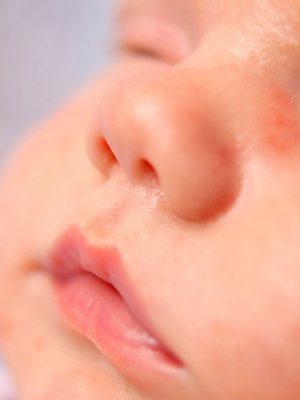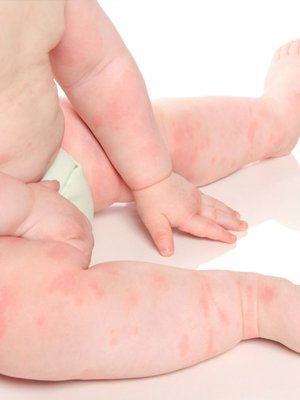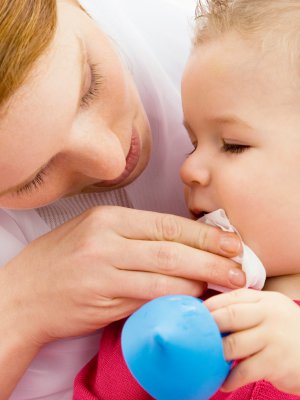REFLUX

Reflux occurs when a baby brings up milk during, or shortly after, feeding.1 Regurgitation is when this refluxed milk reaches the mouth and may be spat out. Reflux and regurgitation are more passive actions and should not be confused with vomiting, which is the forced muscular expulsion of milk from the stomach.1
Reflux and regurgitation may be unsettling to witness, but are both normal processes that can occur due to a physiological immaturity of the lower esophageal sphincter. As the digestive tract develops, the situation usually resolves; however, before this development is complete, avoiding force-feeding an infant too much milk at one time and regular burping can help reduce the occurrence of reflux and regurgitation.1
What causes regurgitation in infants?
In rare cases, there may be an underlying cause to excessive reflux or regurgitation. These include, gastro-oesophageal reflux disease, where the muscle valve between the oesophagus and stomach is weak and fails to function correctly, or a blockage in the digestive tract.

Reflux and regurgitation as symptoms of Cow’s Milk Protein Allergy
CMPA and reflux are considered to be among the most common disturbances in infants.3,4 Reflux and regurgitation are known to be common symptoms of CMPA4,5,6. Cow’s milk protein has been shown to be associated and responsible for inducing symptoms of reflux in almost 50% of infants under the age of 12 months.3,4,5
The majority of infants affected with CMPA have at least two symptoms affecting at least two different organ systems.7,8 If, in addition to regurgitation your patient shows any of the signs and symptoms that can be related to CMPA9 (see below), you can use the CoMiSS® tool10 to score the combination of their symptoms and assess the likelihood of CMPA.
Signs and symptoms related to CMPA9
- Gastrointestinal/Digestive: Colic, vomiting, infantile anorexia, diarrhea, constipation
- Respiratory: Chronic cough, sneezing, wheezing, runny nose
- Skin: Rash, atopic dermatitis, urticaria, angioedema
- General: Failure to thrive, anaphylaxis, insomnia, inconsolable crying
How to score this symptom with the CoMiSS® tool
· The higher the volume and the severity of the regurgitation, the higher the score
· Only score infants aged >2 weeks, <6 months
· In addition to the regurgitation score, if any of the following signs or symptoms related to CMPA are also present, they should also be given a score using the CoMiSS® tool. These include crying, diarhhoea, constipation, skin (atopic dermatitis and urticaria) and respiratory symptoms
CoMiSS® awareness tool
The Cow’s Milk-related Symptom Score (CoMiSS)® is a simple, fast and easy-to-use awareness tool designed to help you more easily recognise the signs and symptoms that can be cow’s milk-related in infants and young children.

If you suspect your patient is suffering from symptoms that may be suggestive of CMPA, use the CoMiSS® tool to score and assess the likelihood of CMPA.
OTHER SYMPTOMS OF COW'S MILK PROTEIN ALLERGY
|
References |
|
1. NHS Choices. Reflux in babies information sheet. http://www.nhs.uk/conditions/reflux-babies/Pages/Introduction.aspx (Accessed April 2016) 2. Vandenplas Y. and De Greef E. Acta Paed. 2014;103(6)e243–50 3. Iacono G., et al. J Al Clinical Immunol. 1996;97(3):822–7 4. Cavatai F., et al. J Pediatr Gastorenterol Nutr. 2000;30:s36–44 5. Salvatore S. and Vandenplas Y. Pediatrics. 2002;110:972–84 6. Ravelli AM., et al. J Pediatr Gastroenterol Nutr. 2001;32:59–64 7. Lifschitz C. and Szajewska H. Eur J Pediatr. 2015;174:141–50 8. HØst A. Pediatr Allergy Immunol. 1994;5:1–36 9. Koletzko S., et al. J Pediatr Gastroenterol Nutr. 2012;55(2):221–9 10. Vandenplas Y., et al. Acta Paed. 2015;104:334–39 |















